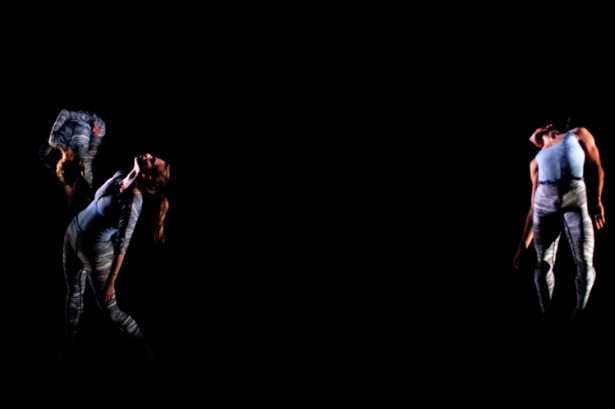Silje Sandodden Kise is a freelance scenographer and costume designer based in Norway. She graduated with a BA in Scenography from Oslo Academy of the Arts in 2008. She also studied 2 years at the Bergen School of Architecture, and has a BA in Theatre Studies from University of Bergen. Her work covers a broad range of productions: from text based theatre productions in large theatre venues to smaller, more experimental independent projects. Slije often works on cross disiplinary projects, and has been focusing on merging scenography and music/sound to tell stories through visual and auditive means as much as text and movement.
How did your interest in Ecoscenography and sustainable theatre production begin?
Over the last few years I have been increasingly aware of the climate crisis but wasn’t sure how to respond to this urgency as an artist, despite taking small steps towards sustainability in my personal life. I actually started to feel a bit guilty about spending all my time making theatre and art, instead of working on the ‘really important issues’ of the world. Then in 2014/2015, I was asked by a colleague, singer Bodil Rørtveit, to join in developing a theatre/music project about sustainability. This performance work (entitled, Sustain) became a big part of my life for many years and sparked my interest in sustainable theatre production. The project has influenced my work ever since.

What does Ecoscenography mean to you? How do you define it (for yourself and others)?
Ecoscenography and sustainable performance art is gradually becoming a more important aspect of my work – it informs all the decisions I make on my projects. I am still in the process of defining Ecoscenography for myself, and to explore what it means for my artistic practice. For me, it is about creating an awareness of all the choices that are behind the making of a performance, especially in creating the design of the scenography and costumes, and the choice of materials. But I also find it relevant to many other aspects of production. For example, the choice of the performance theme, the location and its relationship to the audience, as well as all the practical aspects of making or touring the production, including what happens with all the material objects afterwards.
While I find working with an ecoscenograhic approach very demanding, I do think that it gives something extra to my creative processes. Nevertheless, there are certainly a lot of challenges that can make it hard to make sustainable choices. Sometimes it has to do with low budgets and/or too little time, especially in smaller independent projects. In the bigger institutions, I often find it difficult to get the rest of the theatre team on board to prioritize sustainability – theatres can be such big ‘machines’ with huge time pressures, with a ‘this is how we have always done things’ mentality. It is especially hard to come from the outside (as a freelancer) and try to tell the institutions to change and make other choices.
Fortunately, I have been noticing a big change in the Norwegian performing arts sector over the last couple of years. Almost every organisation now has a focus on sustainability, with a commitment to implement this into practice. Some theatres have actually put these demands into contracts for freelance artists (i.e. that they should choose sustainable ways of working and travelling to the theatre). This is very inspiring and makes it easier to demand that theatres make sustainable choices.
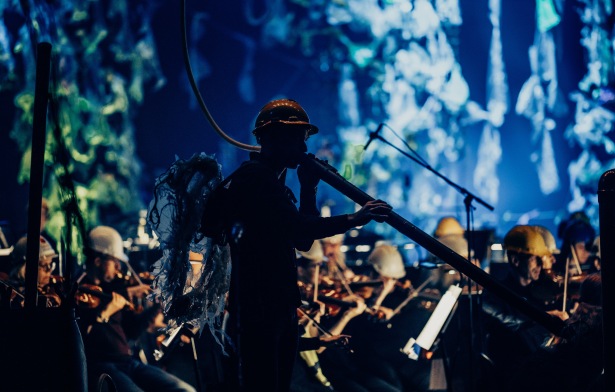
Can you tell me about Sustain? What was it about and how did you bring an ecological ethic to the work?
The aim of Sustain was to make a show about sustainability, overconsumption, and the way us humans have distanced ourselves from nature. I worked with two composers/musicians: Bodil Rørtveit and Jørn Lavoll, director Vibeke Flesland Havre and producer Hjørdis Steinsvik. Together, we wanted to make a performance for musicians to take centre stage (without actors). The images, music and actions of the musicians and the scenography would tell the story we wanted to convey. We wanted to make a strong political performance about sustainability, but at the same time, give the audience a powerful artistic experience, that they could interpret using their own associations and imagination. The process was very crossdisiplinary. We were able to develop the various components of the work (i.e. music, dramaturgy and design) at the same time: the director and me collaborating very closely on the visual concept, the plastic design inspiring the composers and the music etc.
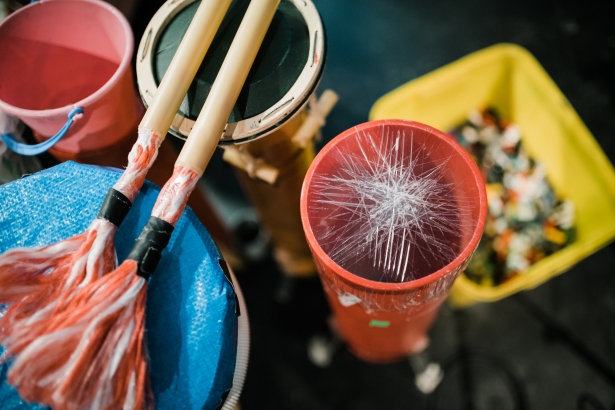
The scenography consisted of self-designed instruments, made out from plastic garbage or reclaimed plastic. We chose plastic for several reasons. Mainly because plastic is not biodegradable and therefore causes big problems when it ends up out in the wild. We were inspired by Chris Jordan photography work (The Gyre) which depicted birds from the pacific ocean that have died because of eating plastic. Jordan’s images show the heartbreaking reality of decomposed carcasses of birds; bones and feather, together with lots of small plastic items, things such as toothbrushes that you use every day. We also chose plastic as a challenge to ourselves, because it is very hard to play music on plastic! Luckily, we worked with a very skilled sound designer, Thorolf Thuestad, and our brilliant musicians (Terje Isungset, Annlaug Børsheim, Magnus Brandseth) learnt how to play the unusual hand-made instruments, searching for ways to produce a lot of different soundscapes with these strange objects.
For the scenography, we made a big tree out of plastic bottles, and filled meters and meters of fishing nets with plastic garbage hung from the ceiling, conveying the image of big branches and leaves of the tree. I spent half a year searching for plastic garbage – finding pieces by the seashore and along beaches, by the road, or in my kitchen – and knocking and banging on things to find the right sounds! What shocked me was how easy it was to find used plastic bags and packaging for the set design. We asked a couple of big stores for their plastic trash, and in just a couple of days they had collected more than we would ever need! We had a big car full of plastic.

What were some of the biggest hurdles that you have had to tackle in designing Sustain? What are you most proud of?
The hardest part was to design and build instruments that actually worked. Plastic is a very hard material to work with. I tried to find environmentally friendly solutions and avoided using as much chemicals as possible. However, that meant that we had to put things together in a very labour-intensive way or use things like epoxy glue because we found no other solution. I was lucky to work with some very skilled people, and we found much joy experimenting and looking for solutions.
I think the biggest hurdle was talking to people about the work. Many people thought that it was kind of embarrassing to make a theatre production for adults that fore-fronted environmental issues. They assumed that sustainability would not make for good art. However, a few months before the premiere at Bergen International Festival in 2017, a large dead whale washed up outside our city with plastic in its stomach. This caused a big stir in the national media, and suddenly everyone was focusing on plastic and marine pollution! We had been exploring plastic waste for 3 years through our work on Sustain, and the show provided a timely platform for audiences to relate to the issue.
Another thing that I am proud of is that we have been able to perform this production in a diversity of arenas and formats (from 2017 to 2020). Our last performance so far, was very special. We were asked by the Bergen Philharmonic Orchestra to create a new version of the performance, where the composers rewrote the music to include 80 philharmonic musicians and a children’s choir. We filled the philharmonic hall with an audience of over 1000 adults and kids amongst the mountains of plastic garbag!

What tips would you give to a scenographer who is exploring sustainable practice for the first time?
Embrace sustainable choices as opportunities, rather than limitations. The search for alternative solutions can sometimes lead your projects in ways you could never imagine. Embrace the unpredictable and let the material(s) lead the way for the development of your design. New and experimental use of materials can sometimes lead to completely different aesthetics than you might have planned, but this can be a very fruitful part of your creative process.


What is your next project?
I am still working (and struggling) to fully integrate ecoscenographic thinking into all my theatre productions, and I don’t succeed 100%. But my aim is to always consider every choice carefully and to look for sustainable solutions as much as possible. I have just finished making a set for Jølster Hotell by Jeff Pedersen Productions, a theatre production about refugees, where a big part of the set was made from used bedlinens (sourced from asylum seekers centres). This autumn, I used ecoscenographic thinking and the Covidsituation to make ‘hammock concerts’ in the forest, where the audience broughttheir own hammocks. This was in cooperation with singer/composer Bodil Rørtveit from Sustain and director Ingrid Askvik. We are now making a new performance, about the dilemmas you facewhen you try to live a modern life as environmentally friendly as possible (and also a little bit abouttrying to change the world through singing). This performance will hopefully tour by train (when thepandemic is over), and all the items for the show will fit in 2-4 suitcases. For the big finale I am making a gala dress out of pine- and spruce cones. It makes the most marvellous sound when thesinger walks!

More information about Sustain can be found via: www.sustaintheconcert.com
(Top photo: Sustain (by Bodil Rørtveit, Jørn Lavoll, Vibeke Havre, Silje Kise.) Scenography: Silje S. Kise. Light design: Silje Grimstad. Photo: Thor Brødreskift.)
The post, Performing Sustainability: Interview with designer Silje Sandodden Kise (Norway), appeared first on Ecoscenography.
———-
Ecoscenography.com has been instigated by designer Tanja Beer – a PhD candidate at the University of Melbourne, Australia, investigating the application of ecological design principles to theatre.
Tanja Beer is a researcher and practitioner in ecological design for performance and the creator of The Living Stage – an ecoscenographic work that combines stage design, permaculture and community engagement to create recyclable, biodegradable and edible performance spaces. Tanja has more than 15 years professional experience, including creating over 50 designs for a variety of theatre companies and festivals in Australia (Sydney Opera House, Melbourne International Arts Festival, Queensland Theatre Company, Melbourne Theatre Company, Arts Centre) and overseas (including projects in Vienna, London, Cardiff and Tokyo).
Since 2011, Tanja has been investigating sustainable practices in the theatre. International projects have included a 2011 Asialink Residency (Australia Council for the Arts) with the Tokyo Institute of Technology and a residency with the Royal Central School of Speech and Drama (London) funded by a Norman Macgeorge Scholarship from the University of Melbourne. In 2013, Tanja worked as “activist-in-residence†at Julie’s Bicycle (London), and featured her work at the 2013 World Stage Design Congress (Cardiff)
Tanja has a Masters in Stage Design (KUG, Austria), a Graduate Diploma in Performance Making (VCA, Australia) and is currently a PhD candidate at the University of Melbourne where she also teaches subjects in Design Research, Scenography and Climate Change. A passionate teacher and facilitator, Tanja has been invited as a guest lecturer and speaker at performing arts schools and events in Australia, Canada, the USA and UK. Her design work has been featured in The Age and The Guardian and can be viewed at www.tanjabeer.com
Powered by WPeMatico








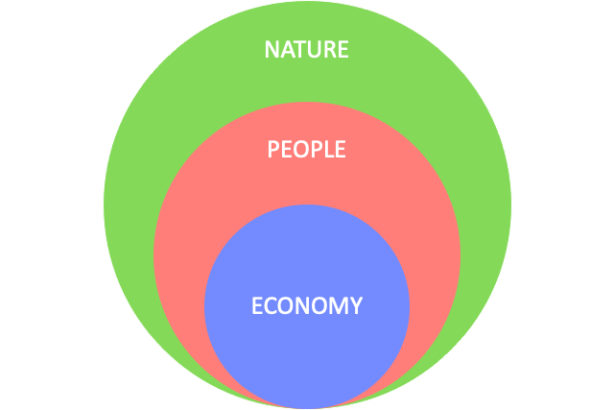

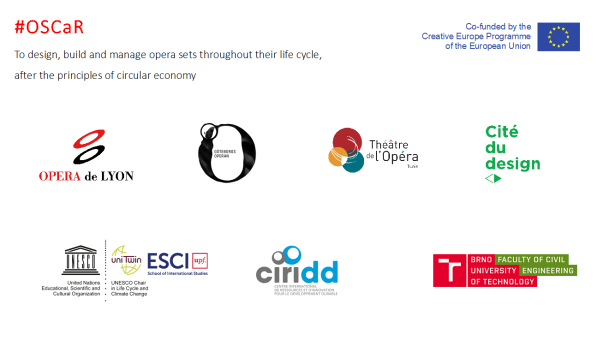
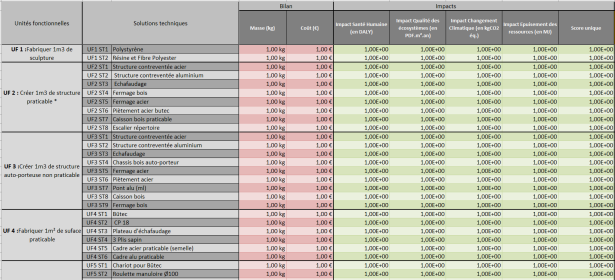


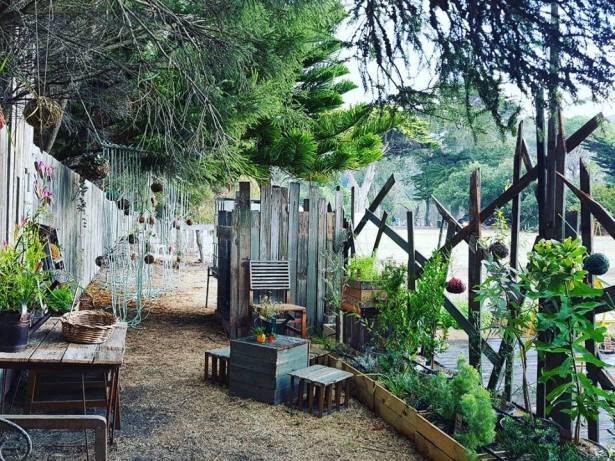
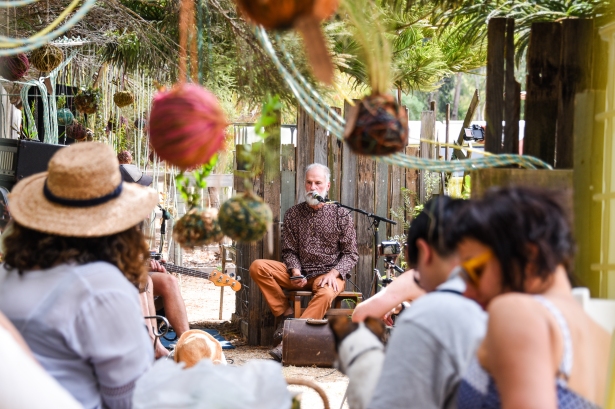
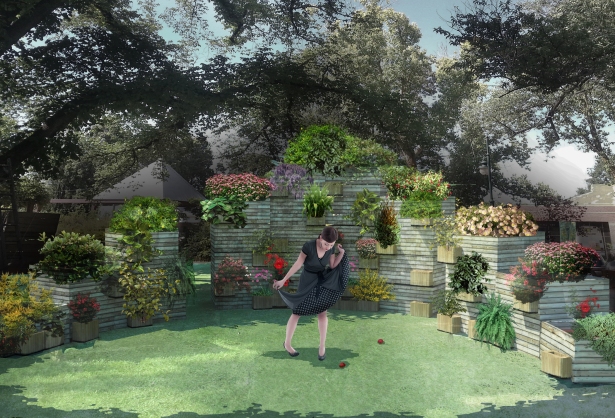
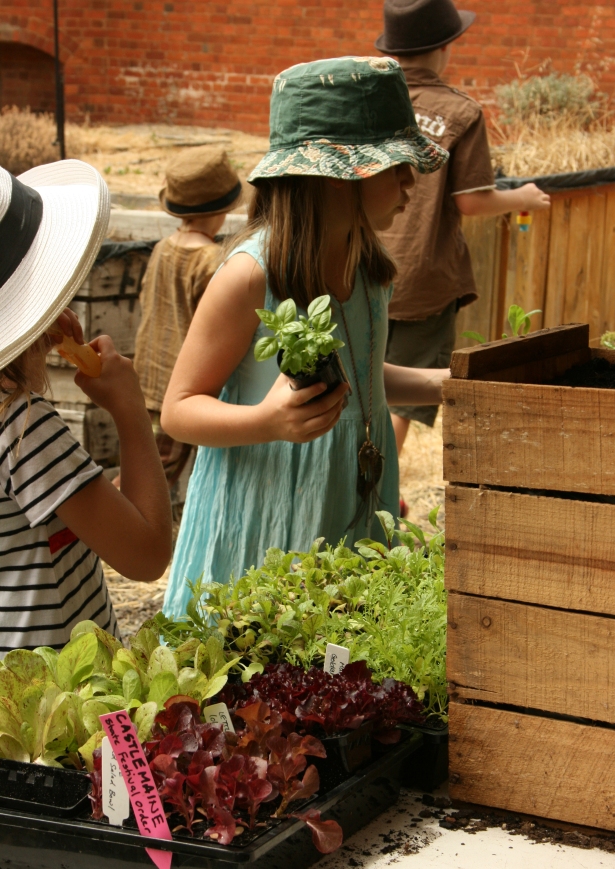


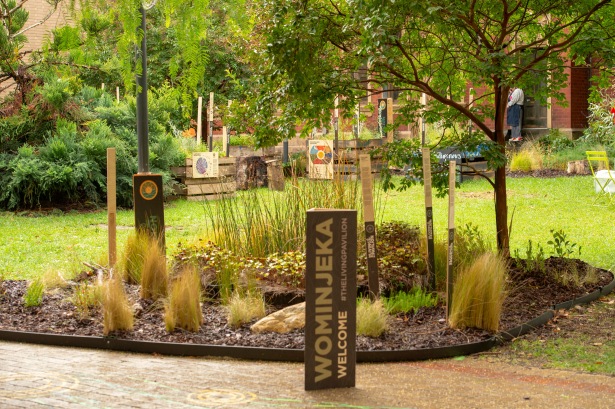




 The NYC Living Stage was a community project that took place in the
The NYC Living Stage was a community project that took place in the  It was amazing to see how much thought went into the communications with the local seniors and children that were engaged in the project, making them feel like they were an integral part of the work, not just passive observers. This turned out to be one of the most enjoyable parts of the whole experience – chatting to locals in the park, hearing their opinions on elements of the design, getting positive feedback, and sometimes blunt criticism. These brief exchanges revealed fascinating anecdotes and snippets of untold histories.
It was amazing to see how much thought went into the communications with the local seniors and children that were engaged in the project, making them feel like they were an integral part of the work, not just passive observers. This turned out to be one of the most enjoyable parts of the whole experience – chatting to locals in the park, hearing their opinions on elements of the design, getting positive feedback, and sometimes blunt criticism. These brief exchanges revealed fascinating anecdotes and snippets of untold histories. Tanja’s process relies on reclaimed materials and so is by nature spontaneous and devised. One of our highlights was visiting
Tanja’s process relies on reclaimed materials and so is by nature spontaneous and devised. One of our highlights was visiting 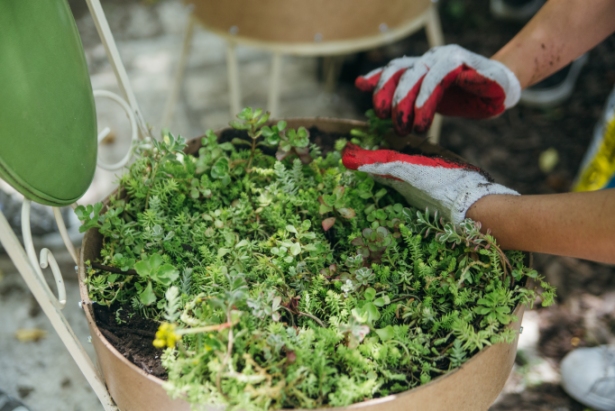
 The design also included transforming various items of furniture into vessels for plants. Working with reclaimed materials, while often tricky and fraught with splinters, provided many opportunities for creativity and resourcefulness and these items proved to be both the object and inspiration for many of the design elements. The luxury of a long installation period (over several weeks), allowed us to refine and tweak elements of the design in situ.
The design also included transforming various items of furniture into vessels for plants. Working with reclaimed materials, while often tricky and fraught with splinters, provided many opportunities for creativity and resourcefulness and these items proved to be both the object and inspiration for many of the design elements. The luxury of a long installation period (over several weeks), allowed us to refine and tweak elements of the design in situ.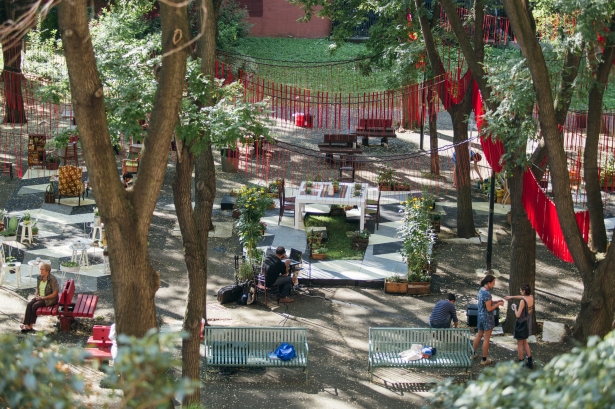 Many of the last minute solutions were discovered in this final week – such as the donation of trapezoid timber platforms that we re-configured into an angular stage for the performance. The installation period also became an accidental publicity stunt and an impromptu performance in itself, as seniors and passers began to stop to watch us work. This was evidence of the unexpected joys of community engaged theatre and public art, supporting the idea that its impact can be felt not just during the celebration but also during the making of the event.
Many of the last minute solutions were discovered in this final week – such as the donation of trapezoid timber platforms that we re-configured into an angular stage for the performance. The installation period also became an accidental publicity stunt and an impromptu performance in itself, as seniors and passers began to stop to watch us work. This was evidence of the unexpected joys of community engaged theatre and public art, supporting the idea that its impact can be felt not just during the celebration but also during the making of the event.


 For those of you that are new to
For those of you that are new to  The Lorne project has been created in collaboration with Ashlee Hughes, assistant designer Pia Guilliatt and the local community. Lorne residents, Helen Smith and Colin Leitch have been particularly instrumental in procuring soil, plants and objects for the stage, with more than 45 boxes of plants actively growing in preparation for the Lorne Sculpture Biennale Opening on the 17th of March.
The Lorne project has been created in collaboration with Ashlee Hughes, assistant designer Pia Guilliatt and the local community. Lorne residents, Helen Smith and Colin Leitch have been particularly instrumental in procuring soil, plants and objects for the stage, with more than 45 boxes of plants actively growing in preparation for the Lorne Sculpture Biennale Opening on the 17th of March. Immerse yourself in the heart of the Blues on The Living Stage. Join us in celebrating an appreciation for all things nature through the lyrical poetry of front man Mike Robinson Koss (vocals/harmonicas/lyrics) and his dynamic ensemble. Complete with vintage guitar tones and bluegrass/ragtime style, this local band combines environmental themes with character and pizazz that will have you tapping your feet and asking for more.
Immerse yourself in the heart of the Blues on The Living Stage. Join us in celebrating an appreciation for all things nature through the lyrical poetry of front man Mike Robinson Koss (vocals/harmonicas/lyrics) and his dynamic ensemble. Complete with vintage guitar tones and bluegrass/ragtime style, this local band combines environmental themes with character and pizazz that will have you tapping your feet and asking for more. Randall has a long history of playing guitar on the south west coast in various incarnations, most notably with the
Randall has a long history of playing guitar on the south west coast in various incarnations, most notably with the 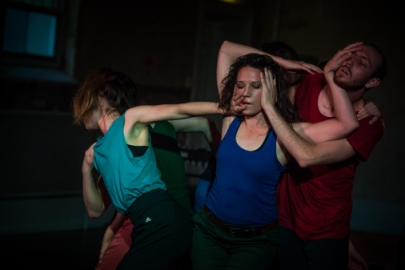 EASTER Weekend: 31st March & 1st April:
EASTER Weekend: 31st March & 1st April: 

 In the field of the performing arts, considering the longer-term consequences of temporary design is rarely recognised as part of a scenographer’s responsibilities. Short-term decadence is generally not questioned in theatre design education, and is often encouraged if the budget allows for it. Scenographers are trained to work towards opening night. How we ‘get there’ or what happens to our sets and costumes after the production ends is often neither a priority nor a consideration. Our focus as designers have typically been to create ‘experiences of impermanence’—often extravagant spectacles with little regard for the more prevailing permanence of unwanted remains (seen and unseen) that persist long after the event.
In the field of the performing arts, considering the longer-term consequences of temporary design is rarely recognised as part of a scenographer’s responsibilities. Short-term decadence is generally not questioned in theatre design education, and is often encouraged if the budget allows for it. Scenographers are trained to work towards opening night. How we ‘get there’ or what happens to our sets and costumes after the production ends is often neither a priority nor a consideration. Our focus as designers have typically been to create ‘experiences of impermanence’—often extravagant spectacles with little regard for the more prevailing permanence of unwanted remains (seen and unseen) that persist long after the event. Traditionally, scenography has primarily been preoccupied with theatre design’s immediate visual, functional or experiential effects, with little regard for much else. While I propose that considering phenomenological aesthetics is key to any successful design, the ecological urgency of the last decade also urges us to consider the long-term impacts of our work. This entails developing a concern for the ecological impact of our ephemeral designs, including an interest in the often invisible (and more permanent) causations of material entanglement of sets and costumes—across bodies, substances and environments, well beyond the theatre. This shift brings up bigger questions of how we practice—of what it means to design for both the impermanence or ‘momentary spectacle’ of the theatre experience whilst also considering the more permanent and ecological implications of such work.
Traditionally, scenography has primarily been preoccupied with theatre design’s immediate visual, functional or experiential effects, with little regard for much else. While I propose that considering phenomenological aesthetics is key to any successful design, the ecological urgency of the last decade also urges us to consider the long-term impacts of our work. This entails developing a concern for the ecological impact of our ephemeral designs, including an interest in the often invisible (and more permanent) causations of material entanglement of sets and costumes—across bodies, substances and environments, well beyond the theatre. This shift brings up bigger questions of how we practice—of what it means to design for both the impermanence or ‘momentary spectacle’ of the theatre experience whilst also considering the more permanent and ecological implications of such work. In my latest academic paper,
In my latest academic paper,  In 2014, I conducted a practice-led research project through the design and development of Sea Change – a short dance piece about climate change by choreographer Richard Osborne – as part of the Resolutions Festival in London. Examining the relationship between materiality, ephemerality, sustainability and/in performance, my aim was to explore the potential of using both phenomenological and ecological aesthetics to guide the spatial design. By synthesising ideas of phenomenological and ecological aesthetics, Sea Change demonstrated how long term environmental considerations can be brought into the ephemerality of scenographic practice and how these two modes of consideration can also bring about a more unified design outcome.
In 2014, I conducted a practice-led research project through the design and development of Sea Change – a short dance piece about climate change by choreographer Richard Osborne – as part of the Resolutions Festival in London. Examining the relationship between materiality, ephemerality, sustainability and/in performance, my aim was to explore the potential of using both phenomenological and ecological aesthetics to guide the spatial design. By synthesising ideas of phenomenological and ecological aesthetics, Sea Change demonstrated how long term environmental considerations can be brought into the ephemerality of scenographic practice and how these two modes of consideration can also bring about a more unified design outcome. Including ecological aesthetics in theatre production and other temporary design practices requires that designers consider their co-extensive relationship with the living world beyond the experiential and ephemeral. This entails a concern for the ‘unseen’ effects of making temporary spaces and implies a kind of interaction with an ‘invisible design’ – that which may not be immediately evident in the making of the work (unrecyclable set elements, flame-retardant, spray paint and $2 shop props) but we acknowledge has causational potential to form a by-product of the ‘visible’ and ‘experienced’ (adding to landfill waste, air pollution and the production of child labour). At the same time, these ‘unseen’ consequences can also be acknowledged in a positive light, where the designer considers the evolutionary potential of a work to contribute to socio-ecological systems. This multifaceted and complex approach to performance design’s ‘aesthetics of impermanence’ remains at the crux of the sustainability challenge and will no doubt require substantial shifts in how we engage mentally as well as practically with the issue.
Including ecological aesthetics in theatre production and other temporary design practices requires that designers consider their co-extensive relationship with the living world beyond the experiential and ephemeral. This entails a concern for the ‘unseen’ effects of making temporary spaces and implies a kind of interaction with an ‘invisible design’ – that which may not be immediately evident in the making of the work (unrecyclable set elements, flame-retardant, spray paint and $2 shop props) but we acknowledge has causational potential to form a by-product of the ‘visible’ and ‘experienced’ (adding to landfill waste, air pollution and the production of child labour). At the same time, these ‘unseen’ consequences can also be acknowledged in a positive light, where the designer considers the evolutionary potential of a work to contribute to socio-ecological systems. This multifaceted and complex approach to performance design’s ‘aesthetics of impermanence’ remains at the crux of the sustainability challenge and will no doubt require substantial shifts in how we engage mentally as well as practically with the issue.